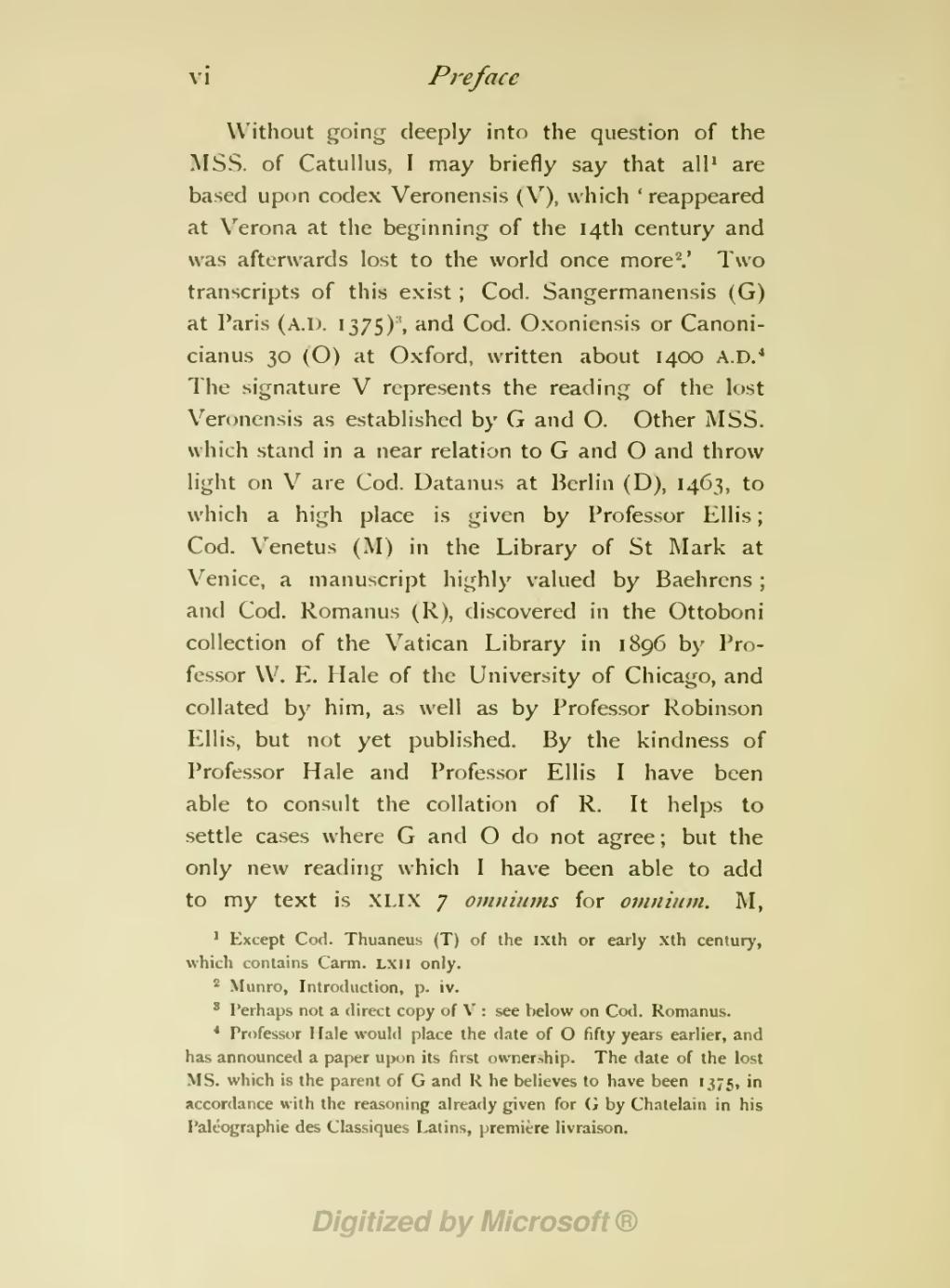Without going deeply into the question of the MSS. of Catullus, I may briefly say that all[1] are based upon codex Veronensis (V), which 'reappeared at Verona at the beginning of the 14th century and was afterwards lost to the world once more[2].' Two transcripts of this exist; Cod. Sangermanensis (G) at Paris (A.D. 1375)[3], and Cod. Oxoniensis or Canonicianus 30 (O) at Oxford, written about 1400 A.D.[4] The signature V represents the reading of the lost Veronensis as established by G and O. Other MSS. which stand in a near relation to G and O and throw light on V are Cod. Datanus at Berlin (D), 1463, to which a high place is given by Professor Ellis; Cod. Venetus (M) in the Library of St Mark at Venice, a manuscript highly valued by Baehrens; and Cod. Romanus (R), discovered in the Ottoboni collection of the Vatican Library in 1896 by Professor W. E. Hale of the University of Chicago, and collated by him, as well as by Professor Robinson Ellis, but not yet published. By the kindness of Professor Hale and Professor Ellis I have been able to consult the collation of R. It helps to settle cases where G and O do not agree; but the only new reading which I have been able to add to my text is XLIX 7 omniums for omnium. M,
- ↑ Except Cod. Thuaneus (T) of the ixth or early xth century, which contains Carm. lxii only.
- ↑ Munro, Introduction, p. iv.
- ↑ Perhaps not a direct copy of V: see below on Cod. Romanus.
- ↑ Professor Hale would place the date of O fifty years earlier, and has announced a paper upon its first ownership. The date of the lost MS. which is the parent of G and R he believes to have been 1375, in accordance with the reasoning already given for G by Chatelain in his Paléographie des Classiques Latins, première livraison.
